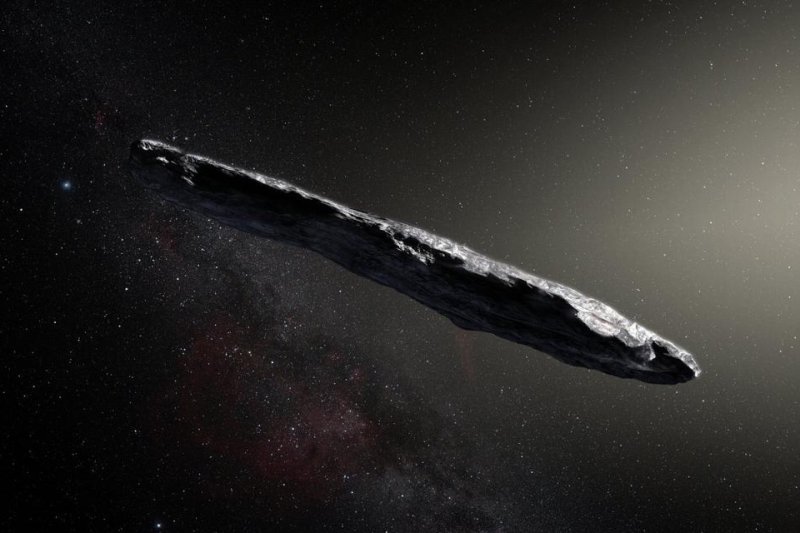The latest artistic interpretation of the first-ever observed interstellar asteroid recalls a ship from Star Trek or Star Wars, as if the Enterprise or Millennium Falcon had been carved from stone. Photo by ESO/M. Kornmesser
Nov. 20 (UPI) -- According to new observations of A/2017 U1, the first-known interstellar asteroid, the space rock is highly elongated, dark, reddish and rich in metals.
The asteroid, dubbed 'Oumuamua, was first spotted on Oct. 19 using the University of Hawaii's Pan-STARRS 1 telescope. The initial observations of the object -- first classified as a comet and later reclassified as an asteroid -- suggested its origins lied outside the solar system.
By the time scientists spotted the asteroid, it was already moving away from their telescopes.
"We had to act quickly," Olivier Hainaut, an astronomer at the European Southern Observatory in Garching, Germany, said in a news release. "'Oumuamua had already passed its closest point to the sun and was heading back into interstellar space."
Researchers quickly pointed ESO'S Very Large Telescope at the space rock. The telescope's FORS instrument revealed the asteroid through a variety of filters. The observations showed A/2017 U1 dims and brightens as it spins about its axis.
"This unusually large variation in brightness means that the object is highly elongated: about ten times as long as it is wide, with a complex, convoluted shape," astronomer Karen Meech said. "We also found that it has a dark red color, similar to objects in the outer solar system, and confirmed that it is completely inert, without the faintest hint of dust around it."
Astronomers hypothesize that the asteroid is dense and rich in metals. Scientists estimate the rock is more than 1,300 feet in length.
When researchers calculated the asteroid's trajectory, they identified a point of origin near the star Vega. However, Vega wasn't near the asteroid's point of origin 300,000 years ago, around the time A/2017 U1 would have passed through this particular region of space.
It's possible 'Oumuamua has been wandering through the Milky Way for millions of years.
"We are continuing to observe this unique object, and we hope to more accurately pin down where it came from and where it is going next on its tour of the galaxy," added Hainaut. "And now that we have found the first interstellar rock, we are getting ready for the next ones!"
Researchers shared their latest observations of the asteroid in the journal Nature.















